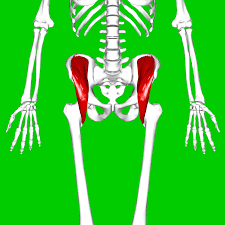Le iliac muscle is a large, flat muscle located in the hip area. It is responsible for moving the leg away from the body and also helps stabilize the hip joint. the iliac muscle arises from the iliac fossa of the pelvis and inserts into the femur bone.
In this article, we will discuss the anatomy and function of the iliac muscle. We will also discuss certain pathologies involving the iliac muscle.
Iliac muscle: Definition
Le iliac muscle is a triangular muscle located in the pelvis. It is responsible for the movement of the thigh at the level of the hip joint (coxo-femoral joint).
Le iliac muscle is located lateral to the psoas major muscle and together they form the iliopsoas muscle.
Le iliopsoas muscle is the strongest and biggest flexor of the hip, which allows us to bring our knees towards our chest. the iliac muscle arises from the wing of the ilium and inserts into the lesser trochanter of the femur.
Iliac Muscle Anatomy
Le iliac muscle is a large, fan-shaped muscle that runs from the lower back to the upper thigh. It is divided into three main sections:
- Iliopsoas;
- The rectus abdominis;
- And the external oblique.
Iliopsoas is the largest and most powerful section of the iliac muscle. It is made up of two muscles: the psoas major and the iliac. The psoas major originates in the lower back and inserts into the upper thigh. The iliac originates in the pelvis and inserts into the upper part of the thigh.
The rectus abdominis muscle is a long, thin muscle that runs the length of the abdomen. It helps stabilize the spine and contracts to give the appearance of six-inch abs.
The external oblique is a large muscle that covers the sides of the abdomen. It helps with the rotation and flexion of the trunk, as well as breathing. Together, these three sections of the iliac muscle work to move and support the core of the body.
Iliac muscle function
Le iliac muscle is a big muscle. It is attached to the lower ribs and pelvis. the iliac muscle contributes to the stabilization of the pelvis and hips, as well as flexion and rotation of the trunk. It also helps lift the leg when walking or running.
Le iliac muscle is one of the largest muscles in the body, and its main function is to provide support and stability to the trunk and lower limbs.
However, it also plays an important role in movement and balance. the iliac muscle is essential for daily activities such as walking, sitting, standing and lifting.
Pathologies involving the iliac muscle
Le iliac muscle can be affected by a number of different pathologies, including:
- psoas tendonitis : Psoas tendonitis is a condition characterized by inflammation of the tendons that attach the iliopsoas muscles to the hip bone. This condition can be painful and limit mobility.
- tears : Tears of the iliac muscle are another common problem, which can occur due to overuse or injury. These tears can cause pain and weakness in the affected area.
- Intestinal problems : Intestinal problems, such as constipation or diarrhea, can also cause pain in the iliac muscle. Indeed, the intestine is located near the iliac muscle and when there is a problem with the intestine, it can also affect the muscle.
- Hernias: A hernia can occur when the iliac muscle weakens and the intestines bulge out of the opening. Symptoms include pain, swelling, and a lump in the abdomen.
While most cases of pain in the iliac muscle can be resolved with conservative treatment, some may require surgery. If you experience pain or discomfort in your lower back or hips, see your doctor to rule out serious issues.



